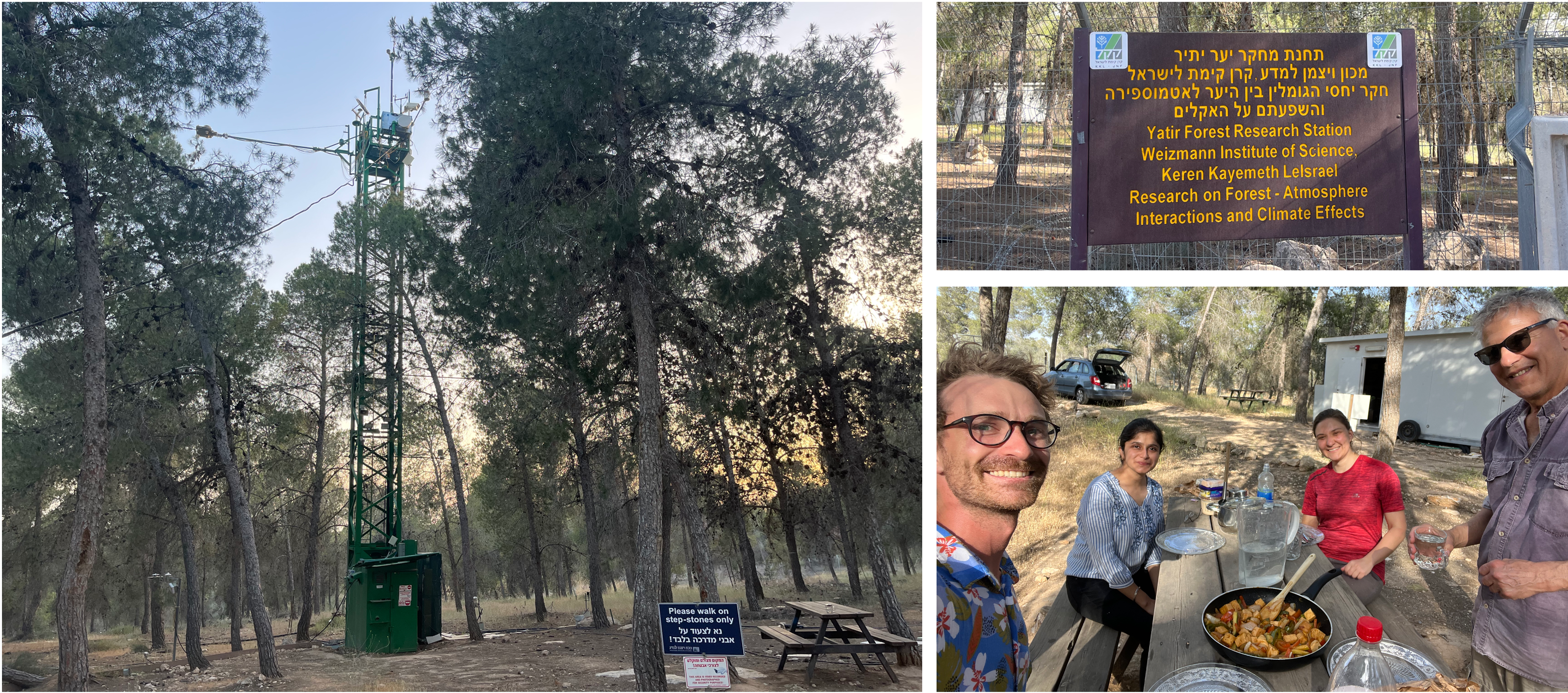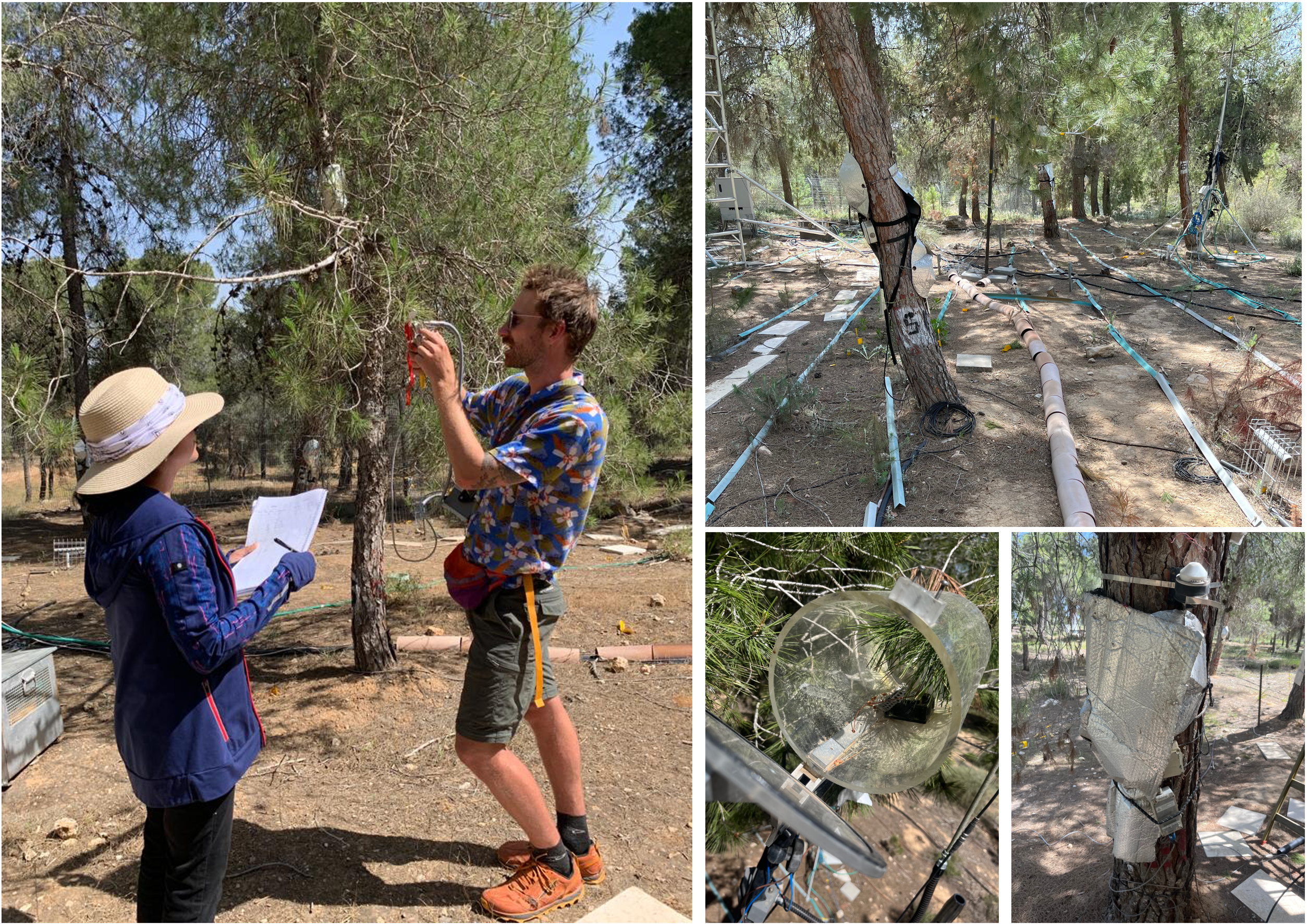Lewis Kunik, recipient of the 2023 Secondment Program award, has completed the program and wrote the following to share with the FLUXNET community:
During April – May of this spring, I traveled to the Weizmann Institute of Science in Rehovot, Israel for my FLUXNET Secondment program. For 6 weeks, I worked with colleagues in Dr. Dan Yakir’s Ecophysiology lab examining the biophysical dynamics of semi-arid forests in Israel. Over the past several decades, Dr. Yakir’s group has built a globally renowned reputation for answering critical questions about carbon, water and energy balance of forests at the dry edge of their ecotonal limits. As I came to learn during my Secondment visit, there are bountiful overlaps between the dry forests of Israel and the forests of the Western U.S., where my doctoral research focuses on the ecophysiological impacts of intensifying heat and drought.

Yatir forest eddy covariance tower and facilities, including the famous picnic table where copious amounts of hummus, coffee and stories are shared.
Israel’s one and only long-term FLUXNET site is located in the Yatir forest at the southern border of the West Bank, receiving an average of only 280 mm of rainfall per year. Planted by the Israeli government in the 1960’s, the human-made Yatir forest is dominated by drought-tolerant pinus halepensis (Aleppo pine) and serves as an incredible case study for the effects of afforestation on semi-arid land. This unique forest monitoring location has provided Dr. Yakir and his group with the tools to address unique questions of global importance: Is afforestation on semi-arid land a sustainable climate solution? Which factors modulate forest regeneration in dry environments? By what mechanisms do conifer trees regulate photosynthesis during extreme heat and drought? My curiosity towards these questions and their application to the Western U.S. are exactly what drew me to develop collaborations with Dr. Yakir’s lab.
During my visit, I joined the group at Yatir to help with collection of solar-induced fluorescence (SIF) data, both at the leaf level and the canopy level. Our goal was to examine the impact of heat and water limitation on fluorescence at scales ranging from leaf-level to canopy to satellite. For this, I paired up with Dr. Ritika Kaushal to take PAM fluorimetry measurements using a MINI-PAM-II throughout the site, aiming to combine with measurements of SIF from the flux tower (JB-Hyperspectral FloX instrument) and from space (TROPOMI satellite instrument), along with meteorological observations and models. Through our data analysis, we identified the trends in seasonality and rainfall dependence that we expected to find from SIF, both within the Yatir forest and across the latitudinal transect of Israel. Our analyses also uncovered a wealth of unanswered questions about the potential for tower- and space-based fluorescence to teach us about heat and drought response across diverse biomes.

Left: PAM Fluorimetry sampling with Dr. Ritika Kaushal at the FLUXNET site. Right: instrumentation used to measure sap flow and leaf-level gas exchange in the experimental irrigation plot within the forest site.
I’m grateful to the FLUXNET for funding this Secondment experience, allowing me to grow personally and professionally amongst the brilliant researchers in Dr. Yakir’s lab. The exchange of expertise between myself and the Yakir lab will serve as a valuable collaboration over long timescales as these remote sensing datasets mature. A special thanks to those at the Weizmann Institute who volunteered their time to teach me about their instrumentation and scientific stories: Prof. Dan Yakir, Dr. Eyal Rotenberg, Dr. Diriba Bane Nemera, Dr. Ritika Kaushal, Dr. Fedor Tatarinov, Yasmin Bohak, Efrat Schwarts, Dr. David Yalin, Dr. Yonatan Sorek, Dr. Junjing Gao and Yair Peri.
